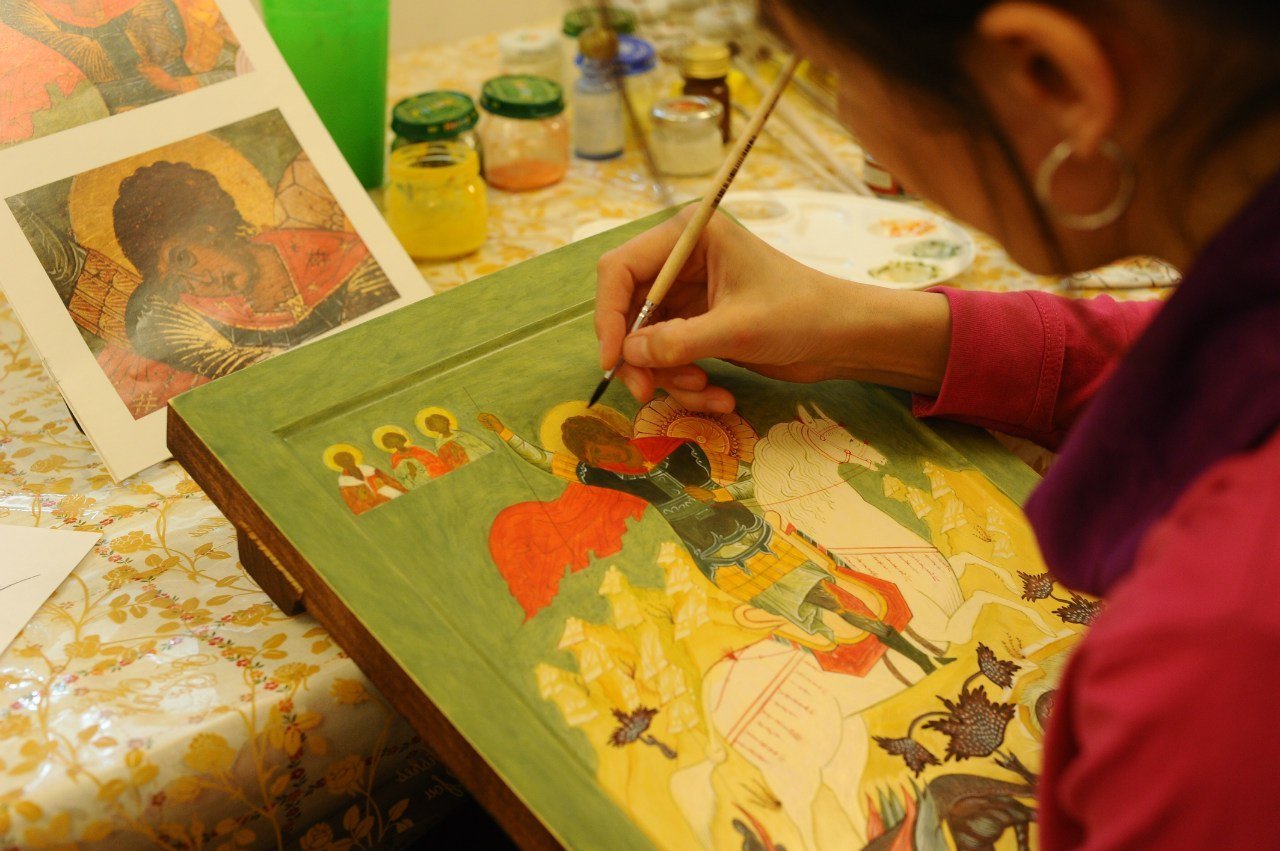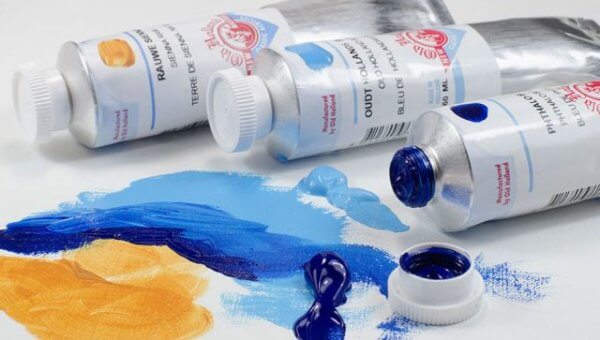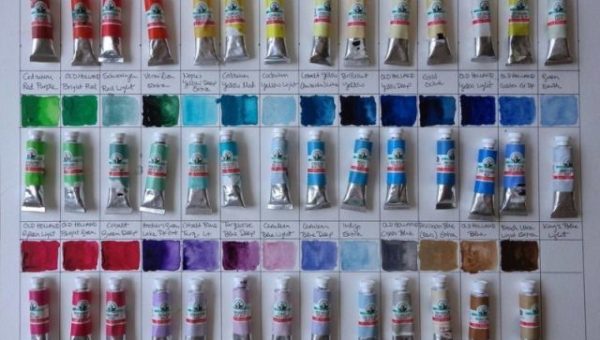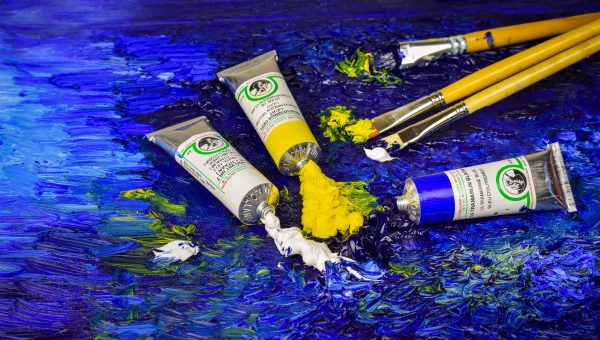
Everything you need to know about tempera (part 1)
What is tempera?
Tempera is the name given to paints that are manufactured using emulsions as binding agents. Every type of emulsion is made up of three elements: water, an emulsifier (various kinds of glue) and the emulsified substance (the oil).
Emulsifiers include: casein, egg whites and yolks, Gum arabic, dextrin and soap. The glue solution, adhering mechanically to the particles of oil, forms an emulsion. When oil and water are mixed mechanically like this, the oil is in a balanced state, and is broken down into tiny little balls, which are enveloped by the glue solution. As it becomes part of the binder, it makes the paints elastic, meaning that they will not crack.
The word tempera (from the Latin temperare – to combine) initially meant any kind of binding matter used to manufacture paints. It later took on a narrower meaning, and came to mean the binding agent that is made of egg. Egg tempera became the most widespread type of painting in the Middle Ages. This paint was mainly applied to wood, and it was also used to create wall paintings.
Paints manufactured using a protein emulsion dissolve easily and their color tone, saturation and lightness change little when they dry out. Paints like this are very durable. The colors in paintings created using tempera, whether by the Old Masters or in modern times, remain almost unchanged.
Tempera paints were sometimes used to create under-paintings, which were then covered with a layer of oil paints. Artists of the Italian Renaissance also used a mixed technique of tempera and oil painting, whereby they created an oil paint covering over the layers of tempera using the glazing technique. Later on, artists began to lose interest in tempera. In the 19th century, they began to turn to this technique once again, but in light of the new requirements of the age, the make-up of the paint changed its nature, with artificial binding agents being added to it. Egg-white started being replaced with oil, though artists continued to use egg-white tempera in a host of countries for a long time.

Casein oil tempera
Casein oil tempera is widely used nowadays. This paint has an indissoluble film and can be applied to bases such as wood, canvas, plaster, glass, paper, cardboard and many other surfaces.
Casein oil tempera is a mixture of pigment and emulsion, obtained by emulsifying oil in a water solution of casein glue. The fact that this dye, which contains oil, dissolves in water, means that it has multiple unique properties, enabling the artist to use a wide range of techniques in their work.
Once they have dried, tempera paints, if correctly prepared, provide a slightly velvety coat, devoid of cracks or lines. Once it is completely dry, the top coat shouldn’t be able to be wiped off with water. Unlike gouache, tempera hardly alters the properties of the paint at all after drying. However, with paints such as ochre, umbra, emerald green, and blue and violet cobalt, some lightening is usually observed, whilst with yellows, some oranges, and even whites, some darkening occurs. Both of these things are largely dependent on the properties of clay and on the number of coats applied during the painting process.
If a painting painted in tempera is covered with varnish, the entire work takes on a color saturation and transparency; in other words, it starts to resemble an oil painting. The uniqueness of tempera is largely lost during this process, however.
Synthetic polyvinyl acetate tempera paints
These days, synthetic polyvinyl acetate tempera paints are widely used. They are a paste-like mixture of pigments with a binder – a water-based emulsion of synthetic resin (polyvinyl acetate), with the addition of structuring agents. Like casein-oil paints, these tempera paints dissolve in water. When applied to the artist’s chosen medium (paper, cardboard, canvas, wood, glass etc.), they provide a matt finish. Thanks to synthetic tempera, artists can use various approaches when applying a layer of paint, and make use of over-painting. Polyvinyl acetate paints make it possible to achieve a decorative vividness of color in a work, and tonal contrast in how form is conveyed.
When the paint is applied to the base layer, film-like layers with a degree of elasticity are formed. To wash away the dried-out coat of paint, a mixture of ethyl acetate and water ethyl spirit is used. Polyvinyl acetate paints must not be mixed during the working process with casein-oil tempera, something that artists often do when they don’t have enough of any given colors in particular hues.
Modern-day tempera more than holds its own in terms of durability in comparison with ancient tempera and oil paintings, and its properties and capabilities match up well with the requirements of various types of modern-day visual art.
By comparison with oil paints, tempera paints dry quickly, such that they are dry enough to be painted over after just a few hours. Tempera paints also out-perform oil paints when it comes to durability and resistance to various external influences, such as moisture and fluctuations in temperature.






